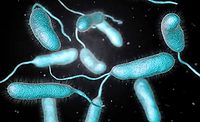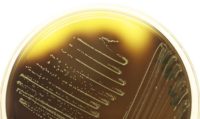Scientists from the National Research Council of Canada (NRC), alongside collaborators from the U.S. and Norway, have finally discovered the algal source of ciguatoxin in Caribbean waters. Approximately 500,000 people around the world are affected by ciguatera poisoning each year, caused by the consumption of fish species like red snapper that feed on ciguatoxin-producing algae.
The groundbreaking finding will make it possible to develop methods to understand the distribution of ciguatoxins across the food web, and to establish standards to help food safety laboratories monitor and manage the risk of ciguatera poisoning.
Ciguatoxins have historically posed a food safety risk in fish sourced from the Caribbean Sea, the Indian Ocean, and the Pacific Ocean; however, because of the effects of climate change in recent years, ciguatoxin has also become a hazard in the waters surrounding the Canary Islands, the eastern Mediterranean Sea, and the western Gulf of Mexico. Although the algal source of ciguatoxins in the Pacific was identified many years ago, the Caribbean source remained unknown, despite nearly 30 years of research.
In 2023, the algal source of ciguatoxin was identified at last. The discovery was the result of a concerted effort launched in 2018 and led by NRC’s Biotoxin Metrology group. Collaborators on the project included experts from the University of South Alabama, the University of Texas at Austin, the University of the U.S. Virgin Islands, and the Norwegian Veterinary Institute. After NRC researchers identified the novel algal ciguatoxin, the U.S. and Norwegian collaborators helped demonstrate metabolism in fish species associated with ciguatera poisoning.
The U.S. scientists first collected algae samples from coral reefs in the Caribbean, established cultures to grow algae, and then conducted toxicity screenings. After toxic strains were received from the U.S., NRC researchers used high-resolution mass spectrometry and innovative chemistry techniques to characterize the algae's chemical profile, enabling them to determine toxin structure and identify the unknown ciguatoxin. Finally, Norwegian researchers conducted enzyme incubation experiments to confirm that the algal toxin transforms into the toxin found in fish that causes ciguatera poisoning.
NRC will continue working with other teams to develop next-generation metrological tools for managing ciguatoxins. The group will also work with collaborators to create certified reference materials that global testing and research labs can use to measure ciguatoxins.




